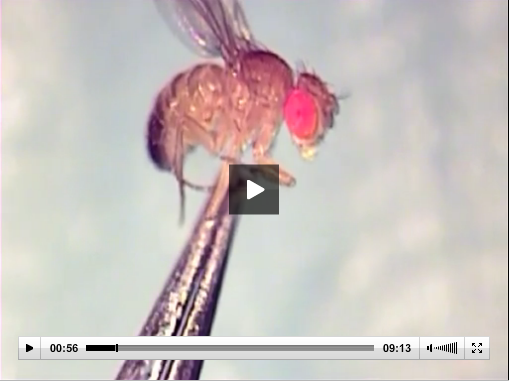Thank you for checking out our “30 days of Science Education” series. Use Science Education videos to introduce undergraduates to the lab.
Drosophila melanogaster, also known as the "fruit fly," is a small insect that is commonly found near ripening fruit. Drosophila is a widely used model organism for scientific research and the study of this organism has provided insight into eukaryotic genetics and human disease.
In this Science Education video, we review the characteristics of Drosophila, the reasons why it makes such a powerful model organism, as well as related important discoveries and applications.
Flies are an excellent model organism because of their striking genetic similarities to humans and other mammals. Approximately 50% of fly genes are homologous to mammalian genes, meaning the gene originates from a common ancestor. Furthermore, 75% of human disease-related genes have orthologs, or genes with similar functions, in the fly.
"An Introduction to Drosophila melanogaster" is part of our Model Organisms I collection, wherein we introduce many methods necessary for doing research using Drosophila, S. cerevisiae (baker’s yeast), and C. elegans (nematode roundworm) models. In addition to discussing the current and historical significance of these organisms, the collection includes concepts and methodology relating to how they are maintained and reproduce in the laboratory.



